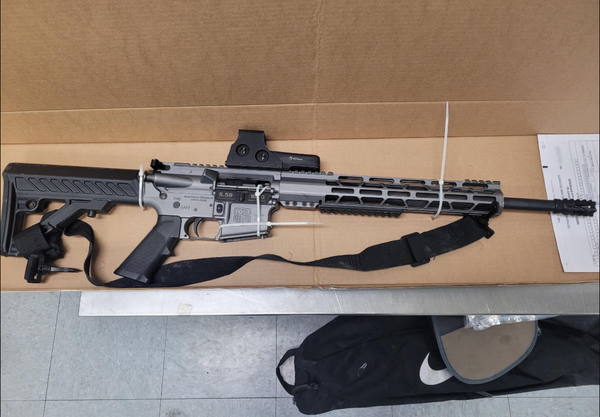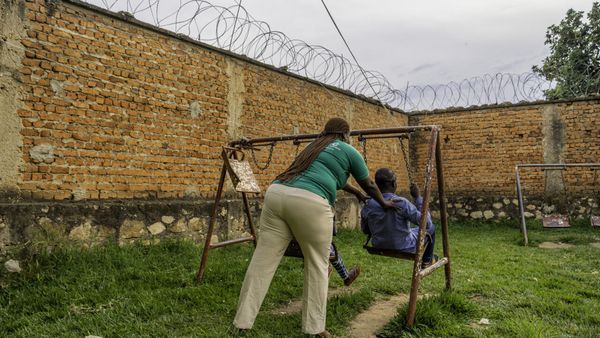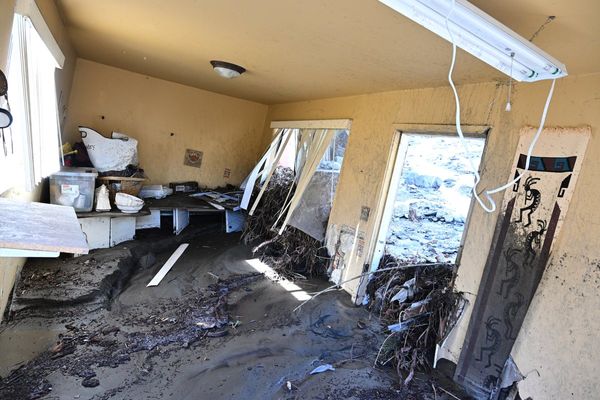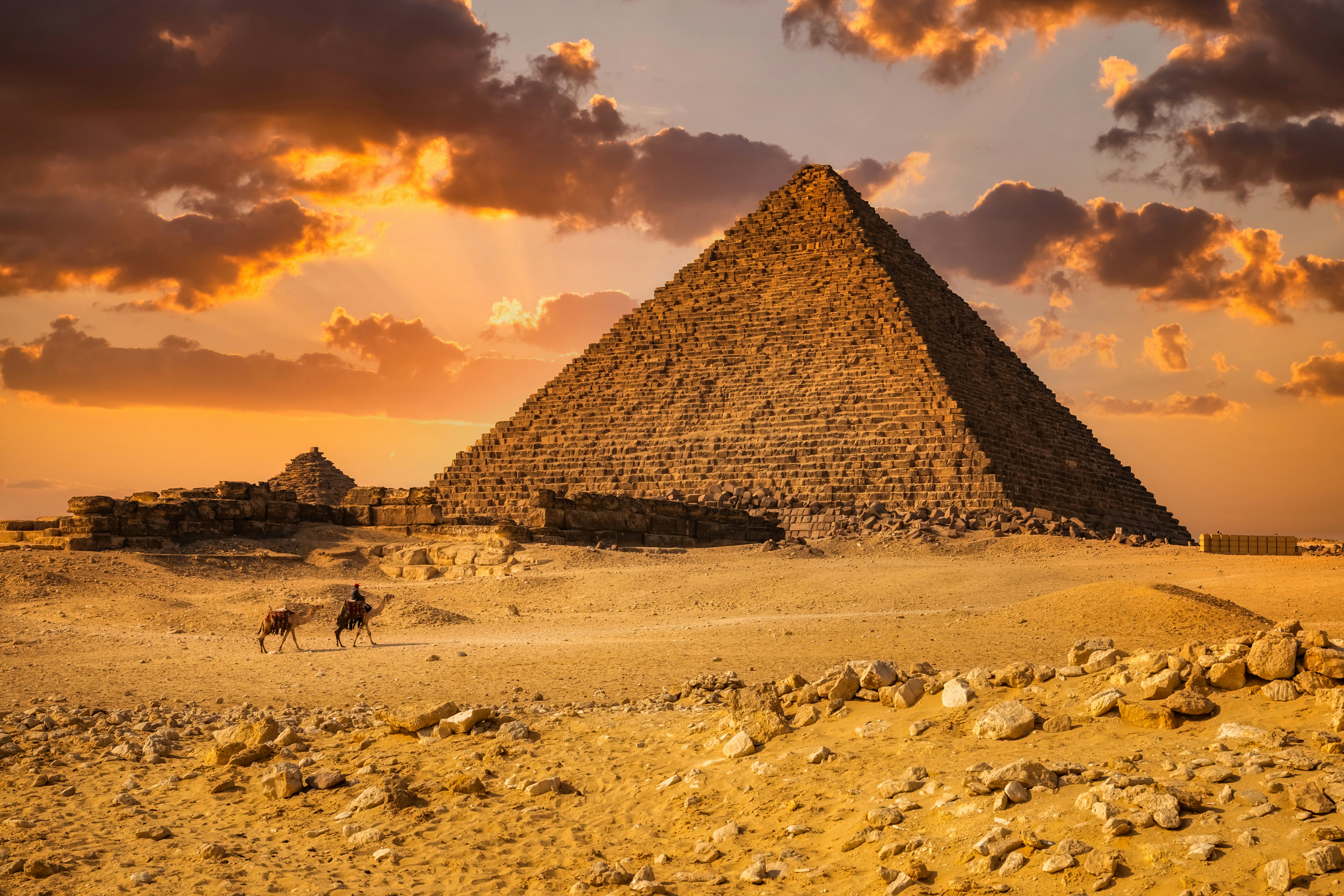
For thousands of years, archaeologists and grave robbers have searched every nook and cranny of the Great Pyramid, second-to-last resting place of the ancient Egyptian ruler Khufu — but the ancient tomb has held onto a few secrets.
Today, tourists enter the Great Pyramid of Giza through the Robber’s Tunnel: an entrance dug into the pyramid’s north face by medieval looters on the orders of a ruler named al-Ma’mun, whose army had swept into Egypt from what’s now Iraq. A few yards above the Robber’s Tunnel entrance, another missing chunk of the pyramid’s northern face reveals four enormous limestone blocks arranged in a chevron shape. And behind that stone chevron, inaccessible from outside, lies a corridor to nowhere.
Archaeologists, engineers, and astrophysicists recently joined forces to map a hidden corridor inside the Great Pyramid in Egypt. The results could yield some insight into the engineering behind one of history’s greatest feats of architecture. They published their results in the journal Nature Communications.
When Astrophysics and Archaeology Collide
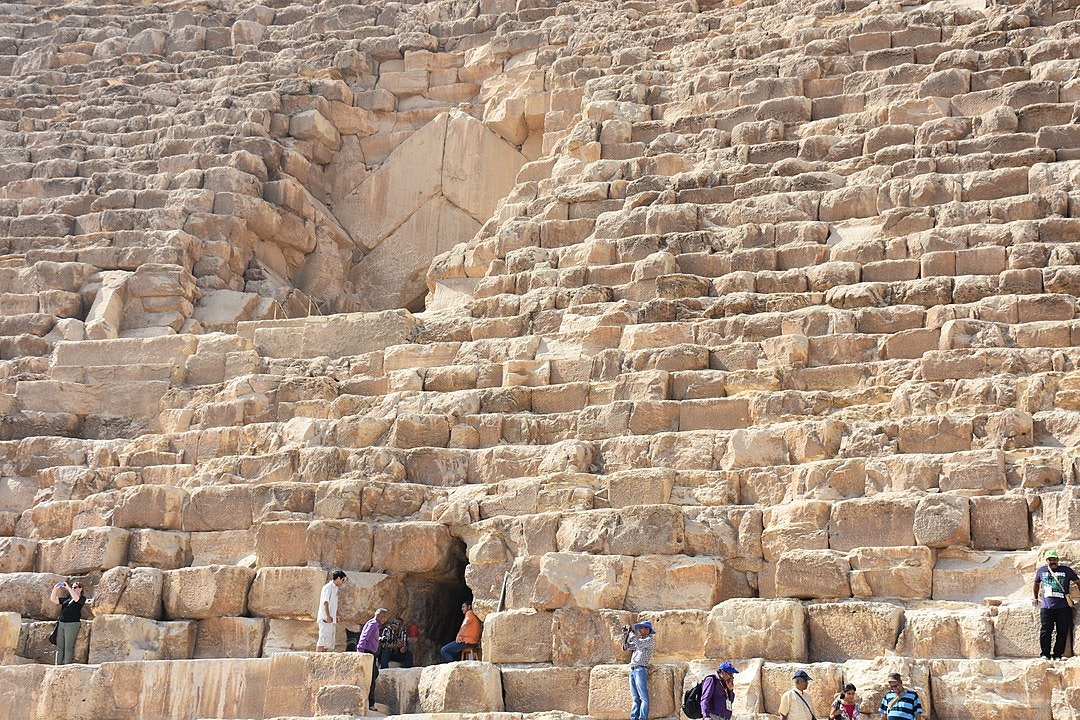
Archaeologists and physicists on the ScanPyramids project discovered the corridor thanks to an invisible rain of high-energy particles from distant supernovae. These subatomic particles, called cosmic rays (even though they’re made of very fast-moving, tiny bits of matter, not light), are constantly bombarding our planet from space. Rock absorbs cosmic rays; the thicker and denser the layer of rock, the more cosmic rays it absorbs. So by measuring how many cosmic rays make it through a structure like the Great Pyramid, researchers can learn whether there are any empty spaces hidden inside, or if it’s just solid rock.
In 2017, ScanPyramids researchers discovered an empty space behind the chevron, along with a much larger space, cleverly called the Big Void, set higher up in the pyramid. Both chambers had remained hidden for roughly 4,500 years despite the determined (and resourceful) efforts of looters and archaeologists.
The ScanPyramids project, as well as other teams of researchers, spent the next several years mapping the long-hidden corridor without moving a single rock or setting foot inside it. Two separate teams used cosmic ray detectors to map the empty space within the northern side of the pyramid, while another team used ground penetrating radar and ultrasonic testing to map out the shape of the corridor’s ceiling.
A Glimpse Inside
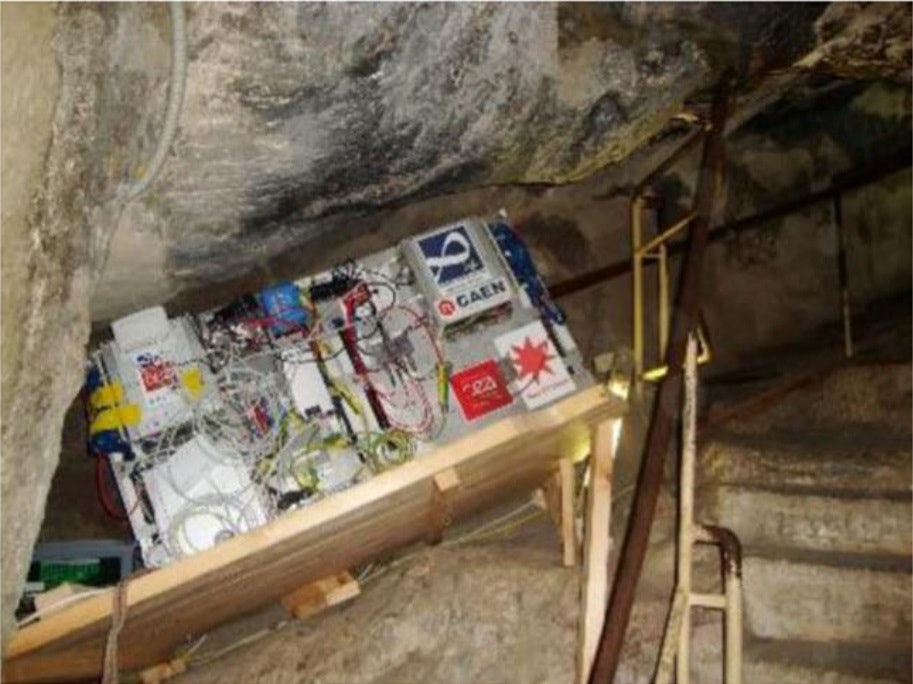
A group of researchers from Nagoya University in Japan, led by Kunihiro Morishima (a co-author on the recent paper) placed cosmic ray detectors at several points in a downward-sloping corridor just below the hidden void, and in another corridor nearby. By measuring how many cosmic rays passed through the stone at different angles and in different places, the team eventually built a 3D map of the space.
Meanwhile, lead author Sébastien Procureur and his team from the Université Paris-Saclay in France, using a different type of cosmic ray detector, got pretty much the same results: amid the solid limestone blocks that form most of the Great Pyramid’s innards, they had found an empty space about six feet wide, six feet tall, and about thirty feet long.
While Procureur and his colleagues were placing cosmic ray detectors in the 4,500-year-old corridors carved by Pharaoh Khufu’s builders, Cairo University engineer Mohamed Elkarmoty (also a co-author on the Nature Communications paper) and his colleagues perched 65 feet above the ground on scaffolds, wielding ground-penetrating radar and ultrasonic testing devices (which measure how high-frequency sound waves pass through, or reflect off of, materials). Their goal was to measure the corridor from its outer end, using different methods.
“As different non-destructive testing techniques have their strengths and limitations, it is recommended to use more than one technique to better understand and confirm the individual results,” wrote Elkarmoty and his colleagues in their recent paper in the journal NDT & E International.
Together, the two teams mapped the location, dimensions, and orientation of the corridor to within a few centimeters.
Recently, the group from Nagoya University got permission from the Supreme Council of Antiquities to drill a quarter-inch-wide hole through the rock and send a tiny camera into the hidden corridor. It’s the first time in more than four thousand years that anyone has set eyes — real or electronic — on the inside of the space.
“There are two large limestone [blocks] at the end [of the] chamber, and now the question is what’s behind these stones and below the chamber,” University of Munich engineer Christian Grosse, a coauthor on Elkarmoty and his colleagues’ paper, told the Associated Press.
A Corridor to Nowhere
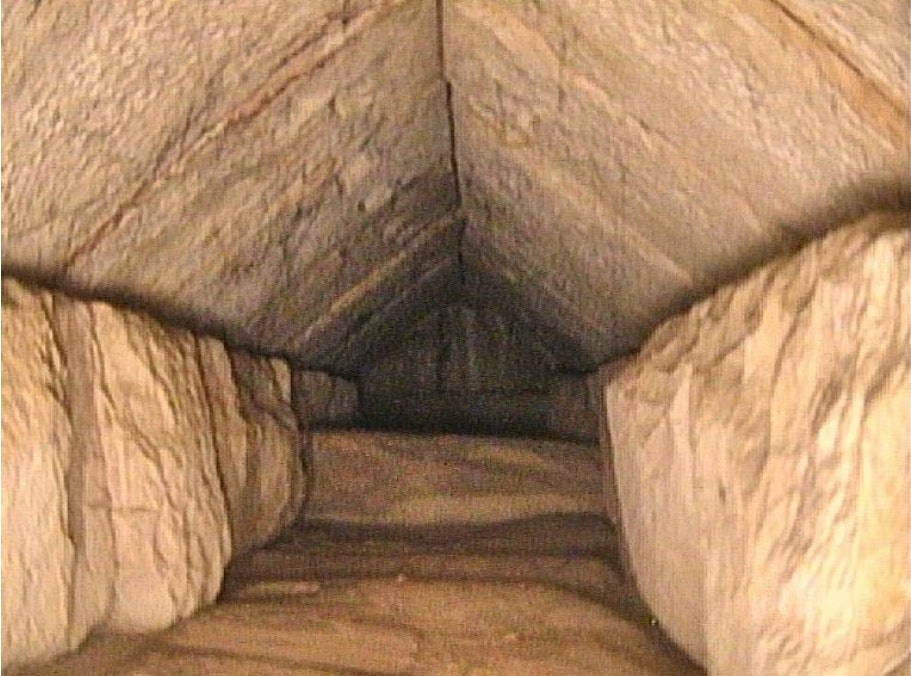
From the far side of the chevron’s thick stone blocks, the six-foot-wide corridor runs about thirty feet southward into the depths of the pyramid, where it seems to dead-end into a pair of limestone blocks. About six feet overhead, the sloped sides of the ceiling meet at an angle — the same angle as the blocks of the chevron outside, in fact. Its walls are rough and unfinished, suggesting that it wasn’t a space meant to be used.
In a recent announcement to the press, the head of Egypt’s Supreme Council of Antiquities, Mostafa Waziri, told reporters that the corridor may have been built to redistribute the weight of millions of massive limestone blocks to take some pressure off other chambers nearby — either the pyramid’s original entrance or other rooms yet to be found. The pyramid’s ancient builders did the same thing with five small rooms above Khufu’s burial chamber.
“Any discovery of previously unknown internal structures could contribute to the knowledge on the construction of the Pyramid,” wrote Procureur and his colleagues in their recent paper.
And that’s part of what makes the corridor to nowhere so important. If archaeologists can figure out which chamber it was meant to shift weight from, that could shed light on the engineering that went into building open spaces inside a pile of millions of tons of limestone. The peaked ceiling, and the chevron structure outside, are also important clues about ancient engineering. Stones in the ceiling of the Queen’s Chamber and several others in the pyramid are arranged in the same way. It looks like a more angular version of an arch and may be meant to bear weight in a similar manner.
Khufu’s Great Pyramid is the oldest example of the chevron technique that archaeologists have ever seen in a pyramid.
